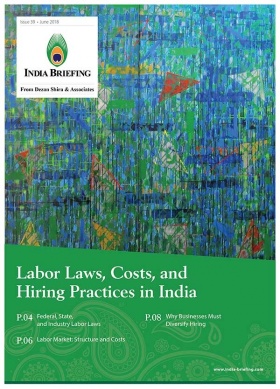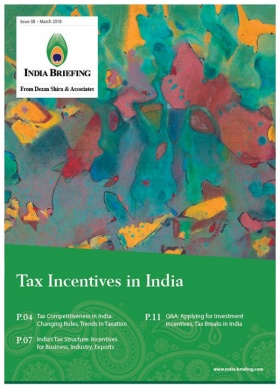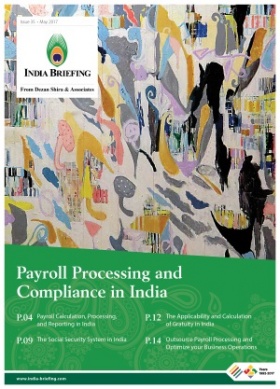Income Tax Return Forms in India
The income tax forms require individuals and businesses to disclose details of their income, professional as well as residential status.
Assessees who earn a taxable income must declare their total income earned by filing an income tax return (ITR) form. For FY 2018-19, the Central Board of Direct Taxes (CBDT) has introduced new ITR forms that have increased reporting requirements and seek more details of the taxpayer with respect to income, profession, and residential status.
The last date for filing income tax returns for FY 2018-19 is August 31, 2019.
It is important for taxpayers to note that quoting Aadhaar number in ITR forms is now mandatory for filing returns, or the tax returns will not be processed.
Below, we explain the ITR forms, their applicability, and the changes introduced for FY 2018-19.
ITR-1 (Sahaj)
Sahaj is a simplified one page form for salaried employees, individuals, and Hindu Undivided Family (HUF), who have income under the following heads, totaling up to INR 50 lakh (US$77,000) and dividend income up to INR 10 lakh (US$15,509):
- Income from salary or pension;
- Income from one house property; or
- Income from other sources like interest income, and agricultural income up to INR 5000 (excluding winning from lottery and income from race horses).
ITR-2
ITR-2 form is applicable to individuals and HUFs who are not carrying out business or profession under any proprietorship, but have the following income sources:
- Income from salary or pension;
- Income from capital gains;
- Income from multiple houses;
- An asset in a foreign country or income from a source outside India;
- Agricultural income of more than INR 5,000 (US$77); or
- Income from other sources (including lottery or horse racing).
In this classification, ‘business’ refers to trade, commerce, manufacturing, or anything concerning them, while ‘profession’ refers to special knowledge that is only acquired after study and application.
ITR-3
ITR-3 form is for individuals and HUFs who meet any one of the following criteria:
- Carrying on a business or profession (or earning income as a partner in a partnership firm);
- Eligible for presumptive business income but where turnover/gross receipts exceed INR 2 crore (US$310,000); or
- Returns include income from house property, salary or pension, as well as income from other sources.
ITR-4 (Sugam)
ITR-4 is for individuals and HUFs who have:
- Presumptive income from business or profession where turnover/gross receipts do not exceed INR 2 crore (US$310,000) in case of businesses, and INR 50 lakh (US$77,550) in case of professionals;
- No capital gains;
- Agricultural income, which is less than INR 5,000 (US$77);
- Income from not more than one house property; or
- Income from other sources.
ITR-5
The ITR-5 form is applicable to businesses that include: firms, LLPs (limited liability partnerships), AOPs (association of persons), and BOIs (body of individuals).
ITR-6
The ITR-6 form is applicable to companies other than those claiming exemption under Section 11 of the Income Tax Act, 1961. That is, exemption on income from property held for charitable or religious purposes.
ITR-7
The ITR-7 form is to be used by persons (including companies), which are required to provide income tax returns under:
- Section 139 (4A) – Charitable or Religious trusts;
- Section 139 (4B) – Political parties;
- Section 139 (4C) – Research associations, news agencies, institutions; or
- Section 139 (4D) – Universities, colleges, etc.
The above notified ITR Forms are available on the tax department’s official website.
Changes introduced in ITR forms for FY 2018-19 (AY 2019-20)
ITR-1 or Sahaj
No major changes, except that ITR-1 is not applicable to those who are directors of a company or shareholders in an unlisted company.
The new changes require directors to file their tax returns in ITR-2 and disclose details like director identification number (DIN), permanent account number (PAN), equity holding along with the names of the companies while filing returns.
ITR-2
Taxpayer having agricultural income and using ITR-2 for filing returns will have to disclose additional details such as land measurements, the address of the land with pin code, and whether the land is owned or held on lease.
Besides, proprietors of residential property will have to furnish details such as tenant name, PAN or TAN number.
ITR-3 and ITR-5
Business owners or professionals with goods and services tax (GST) registration will need to furnish information on turnover or gross receipts reported for GST, and GSTIN. The disclosure is extended to ITR forms from ITR-3 to ITR-6.
ITR-4 or Sugam
It is same as before except that it is not applicable to individuals or HUFs non-resident, ordinarily resident, non-resident partnership forms, directors of companies or shareholders in unlisted companies, or those having more than one house property.
ITR-6
Foreign companies will have to share details of the ultimate parent company while filing ITR. Whereas, unlisted companies will have to provide details of all investors, their residential status, PAN, money in foreign accounts, as well as equities and bonds.
Editor’s Note: This article was originally published in February 2013, and has been updated on August 14, 2019.
About Us
India Briefing is produced by Dezan Shira & Associates. The firm assists foreign investors throughout Asia and maintains offices in China, Hong Kong, Indonesia, Singapore, Vietnam, and Russia.
Please contact india@dezshira.com or visit our website at www.dezshira.com.
- Previous Article Maharashtra’s Investment Incentives for 6 Top Industries
- Next Article Ports, SEZs, and Incentives for Manufacturers in India’s Top Investment Destinations












